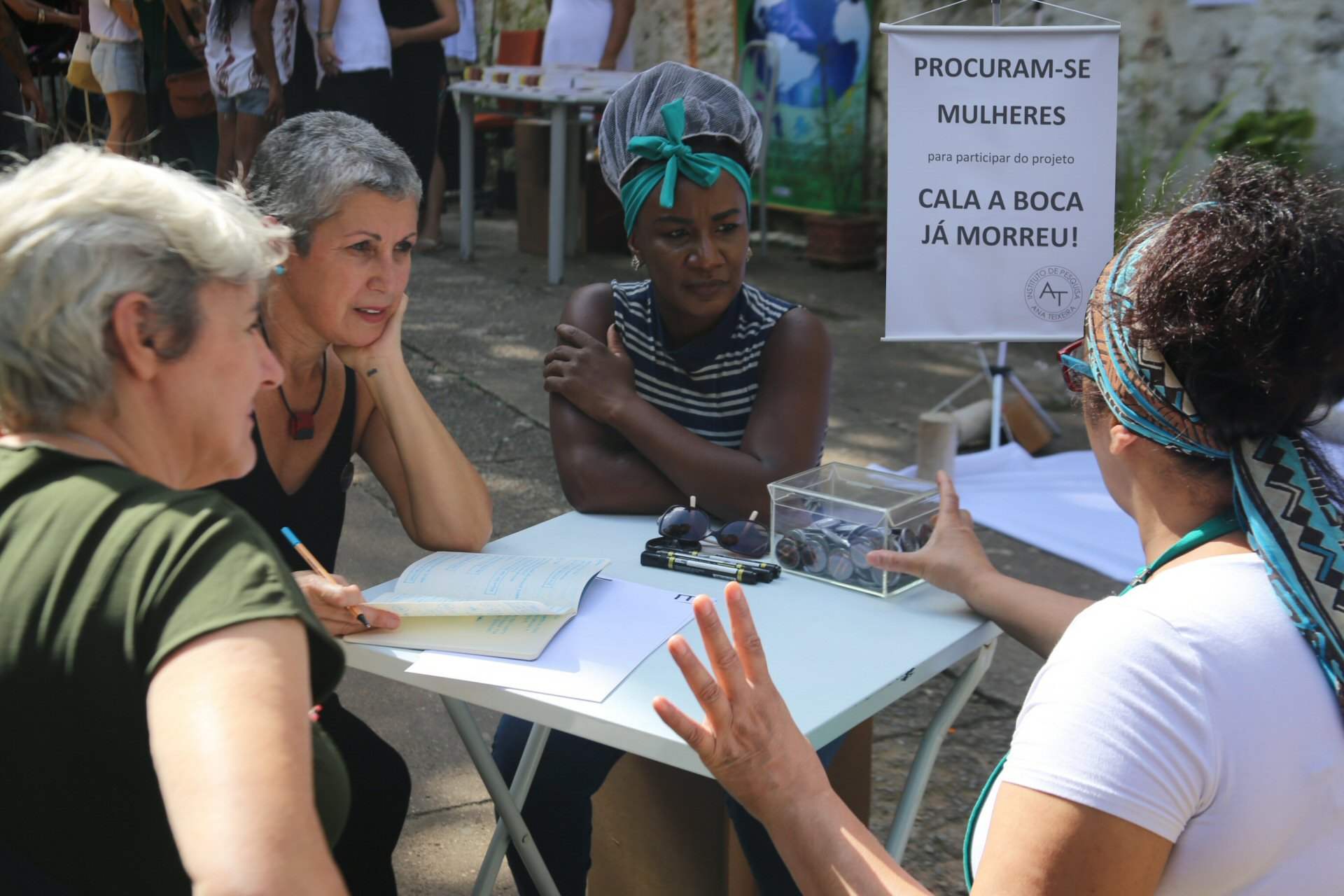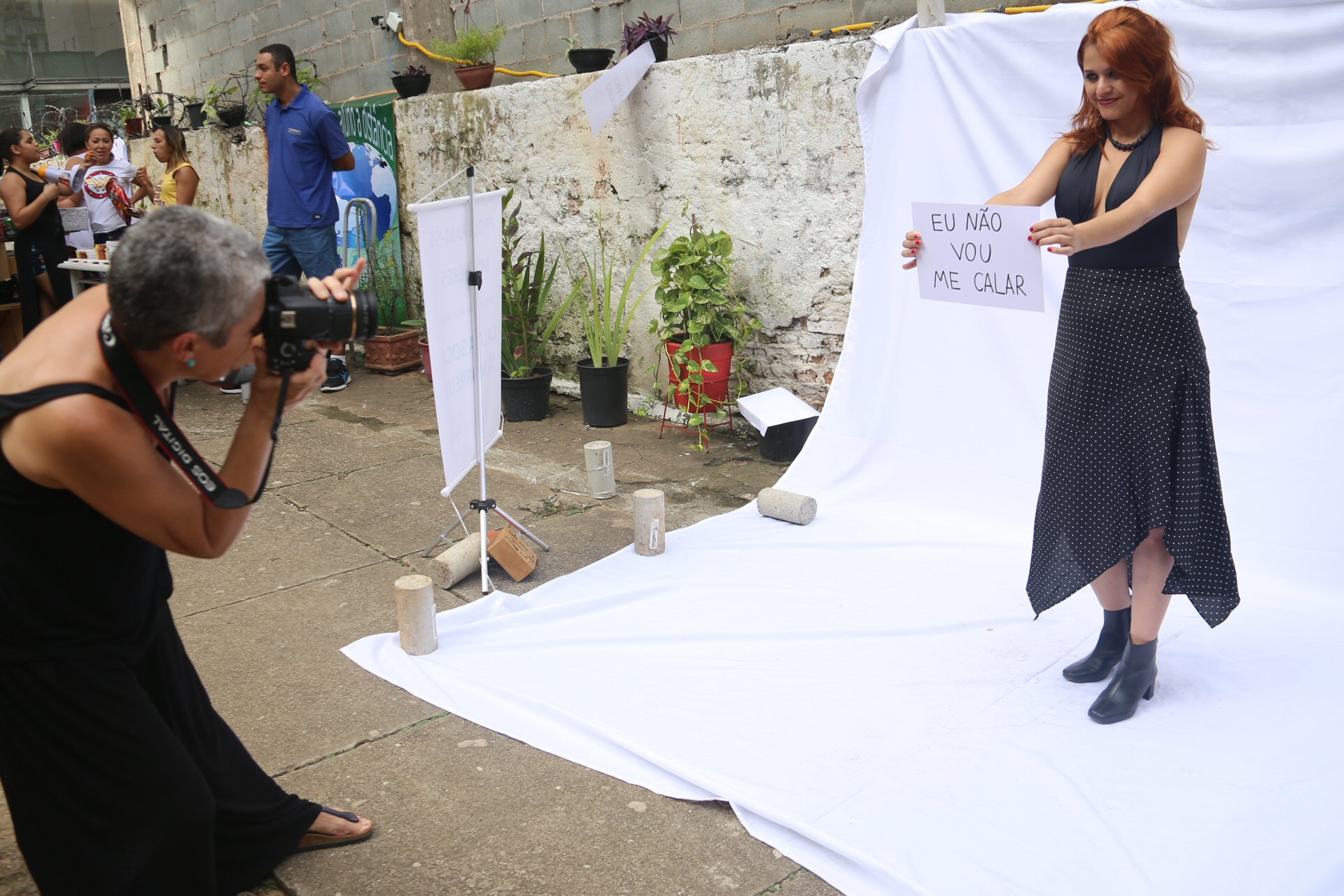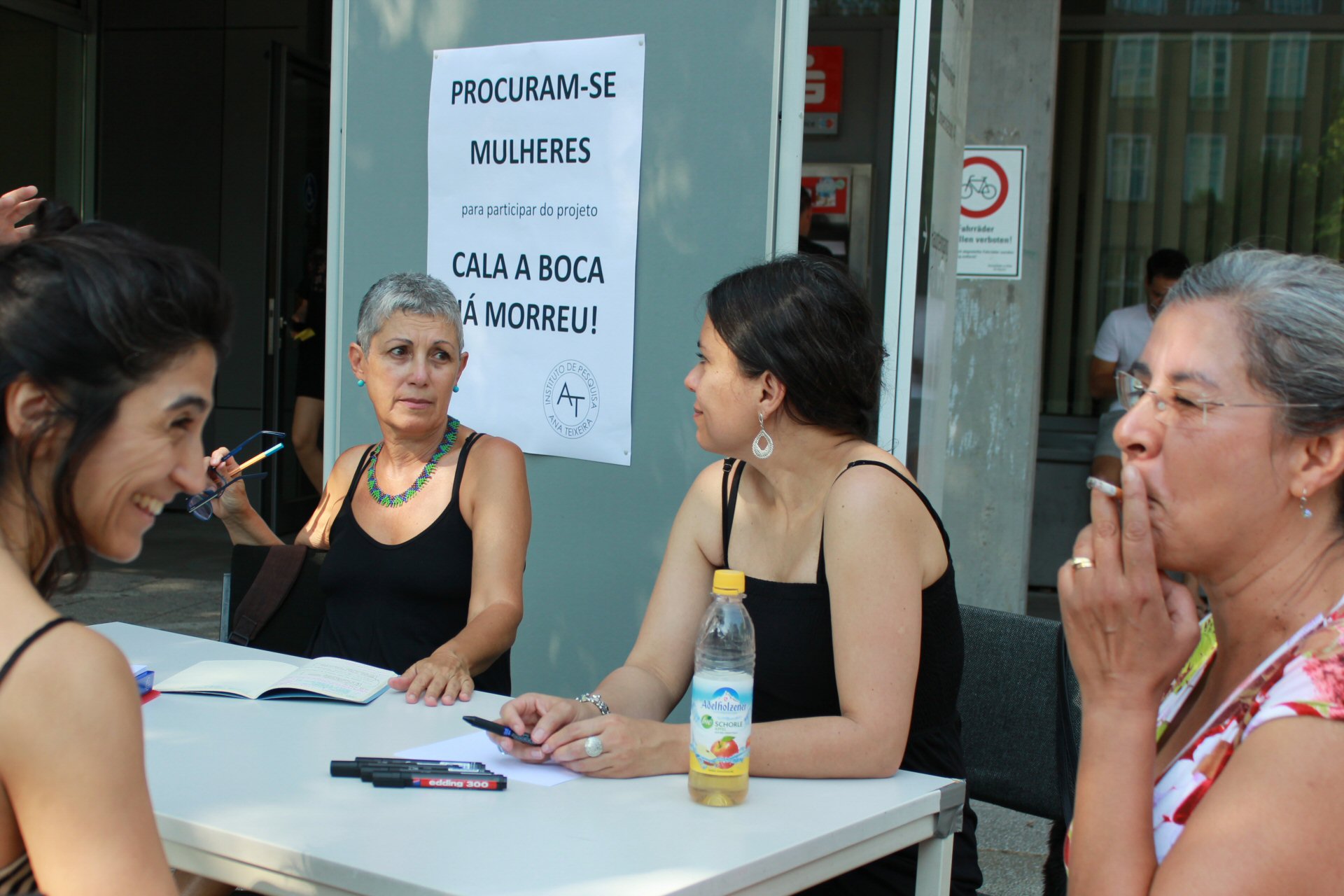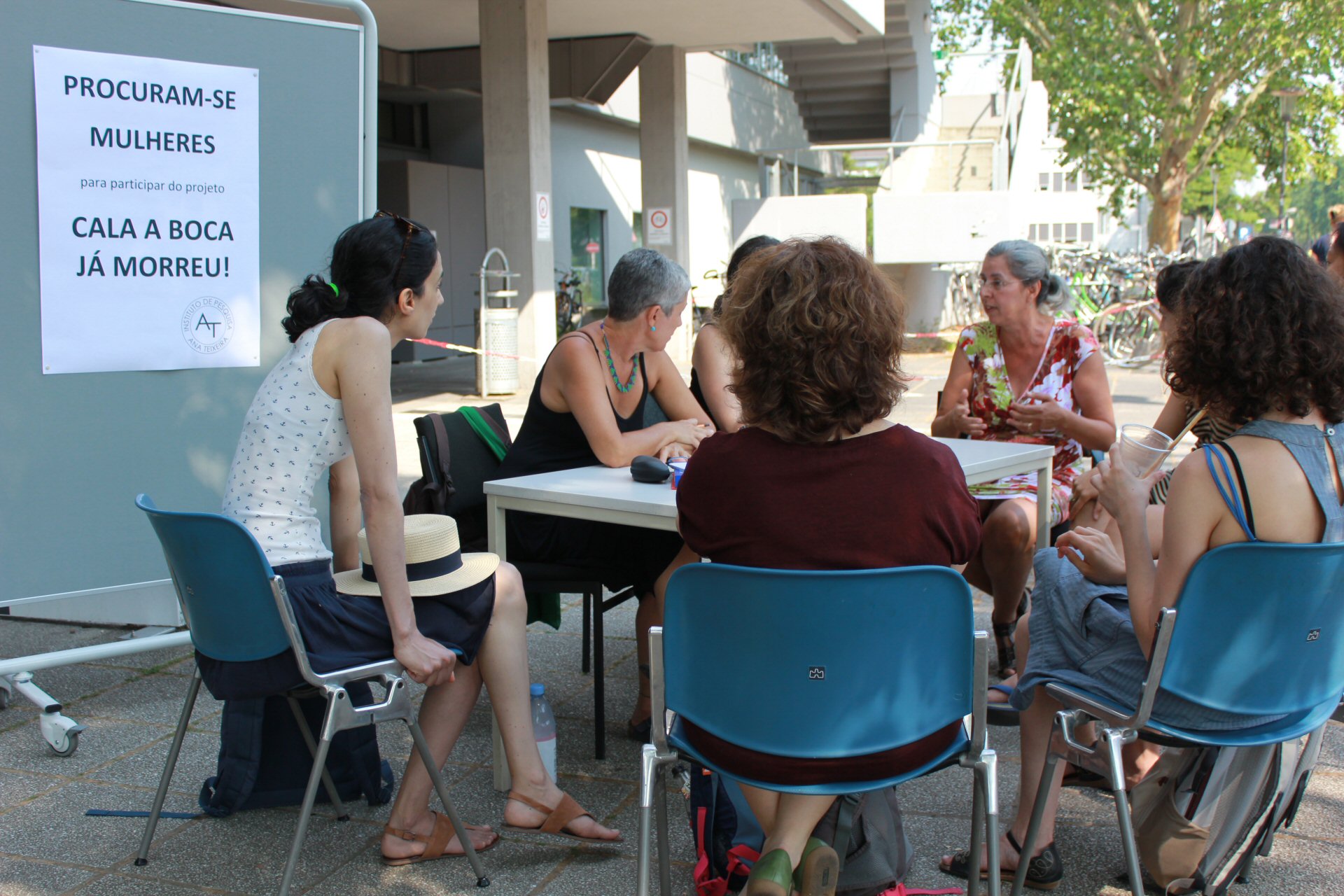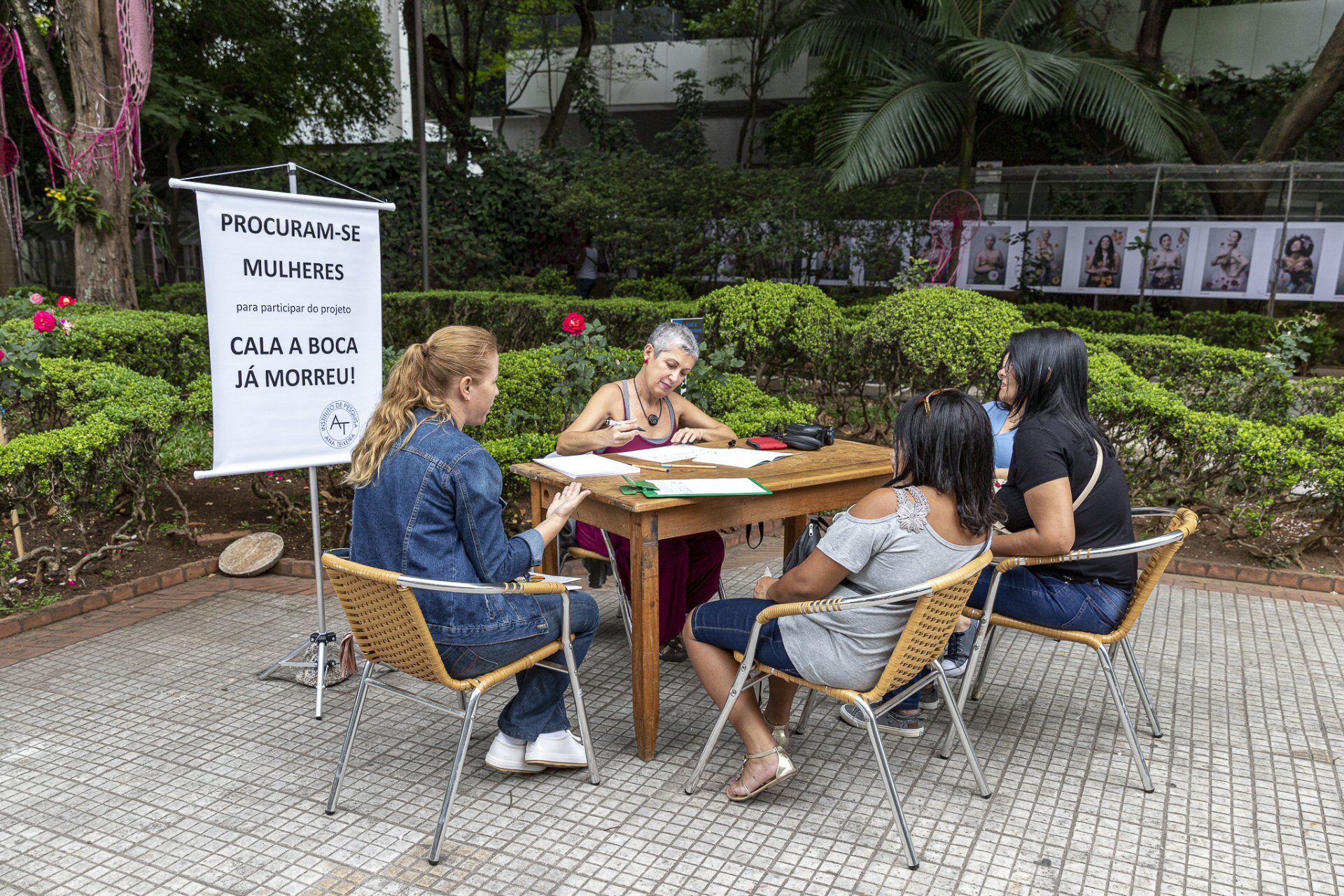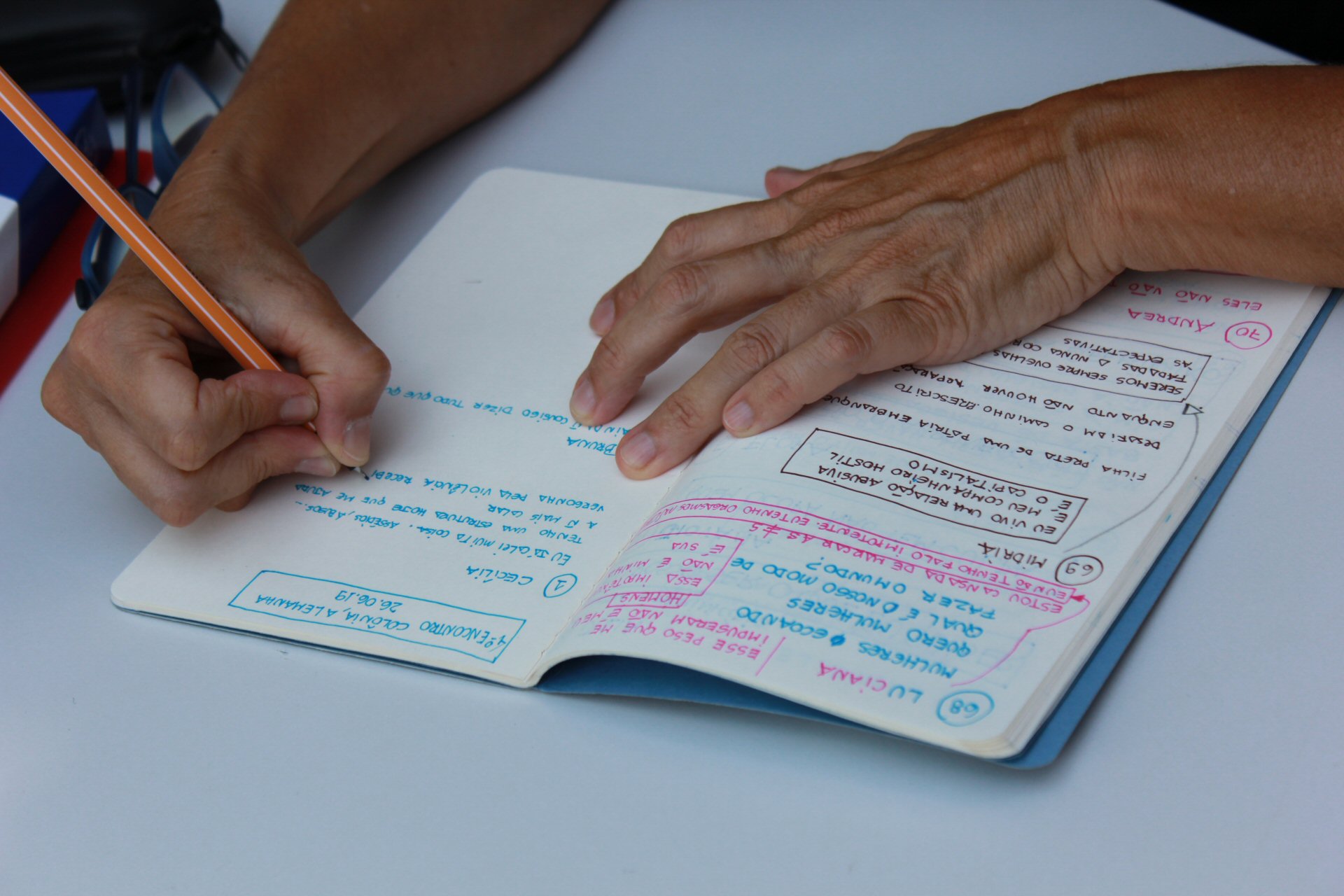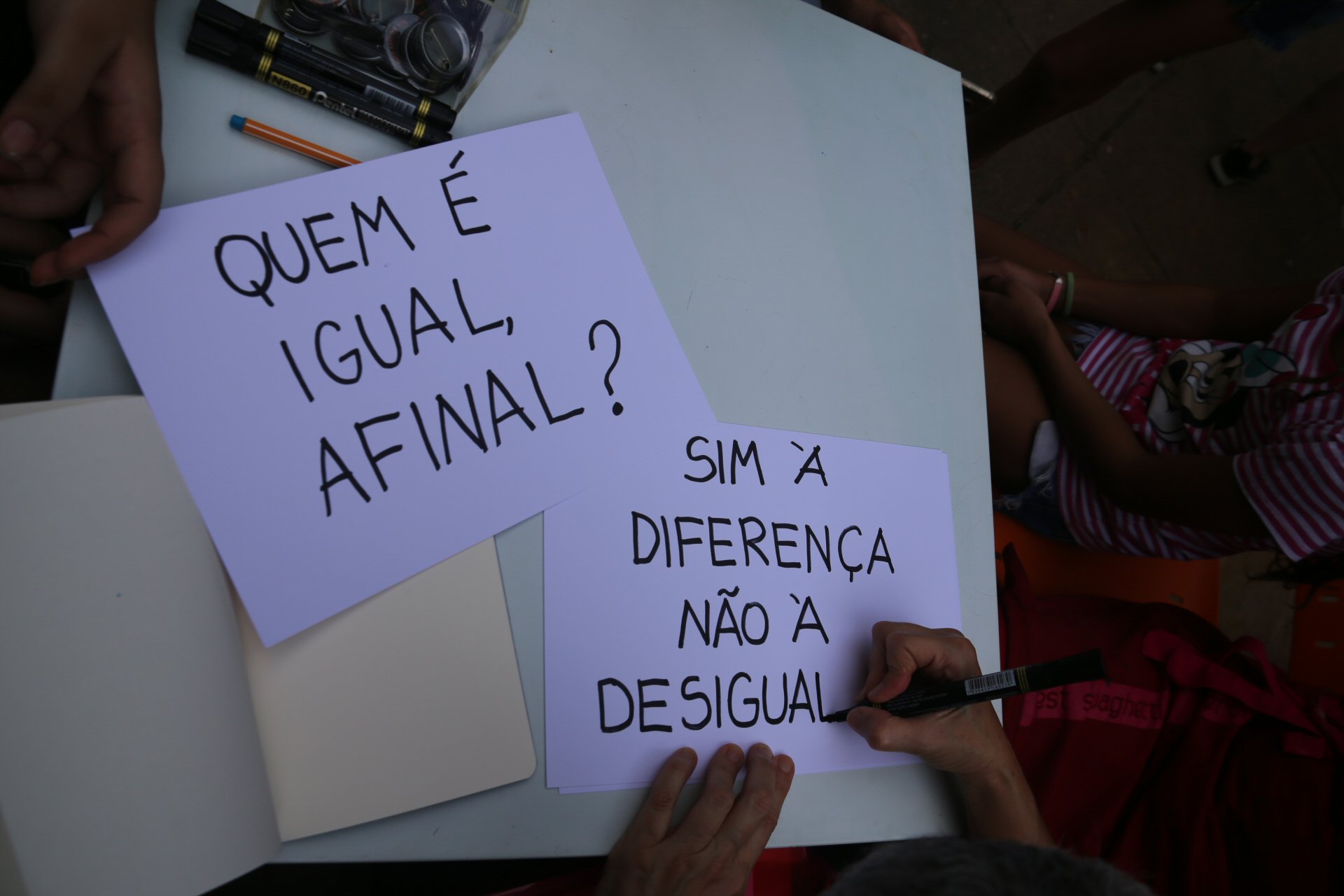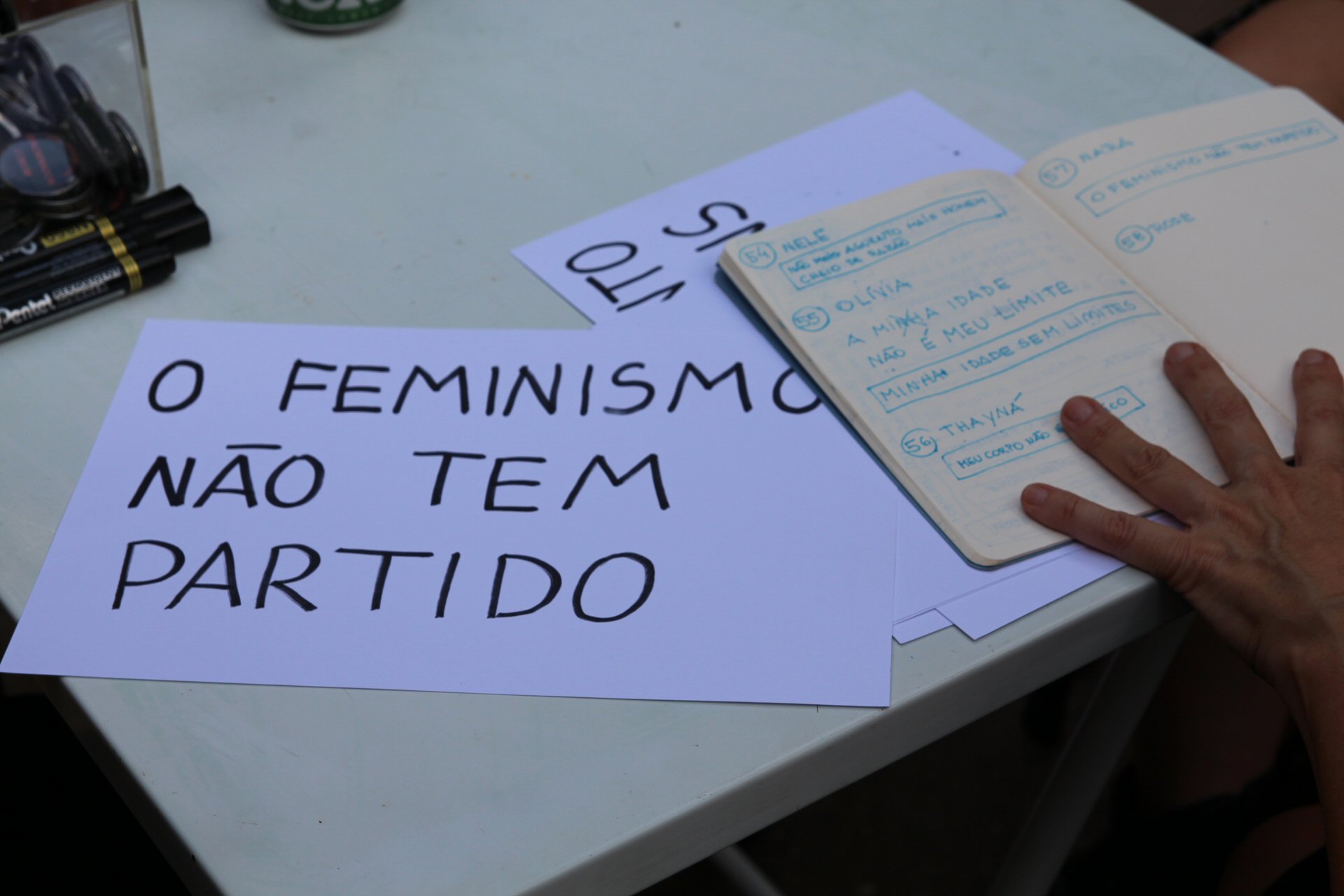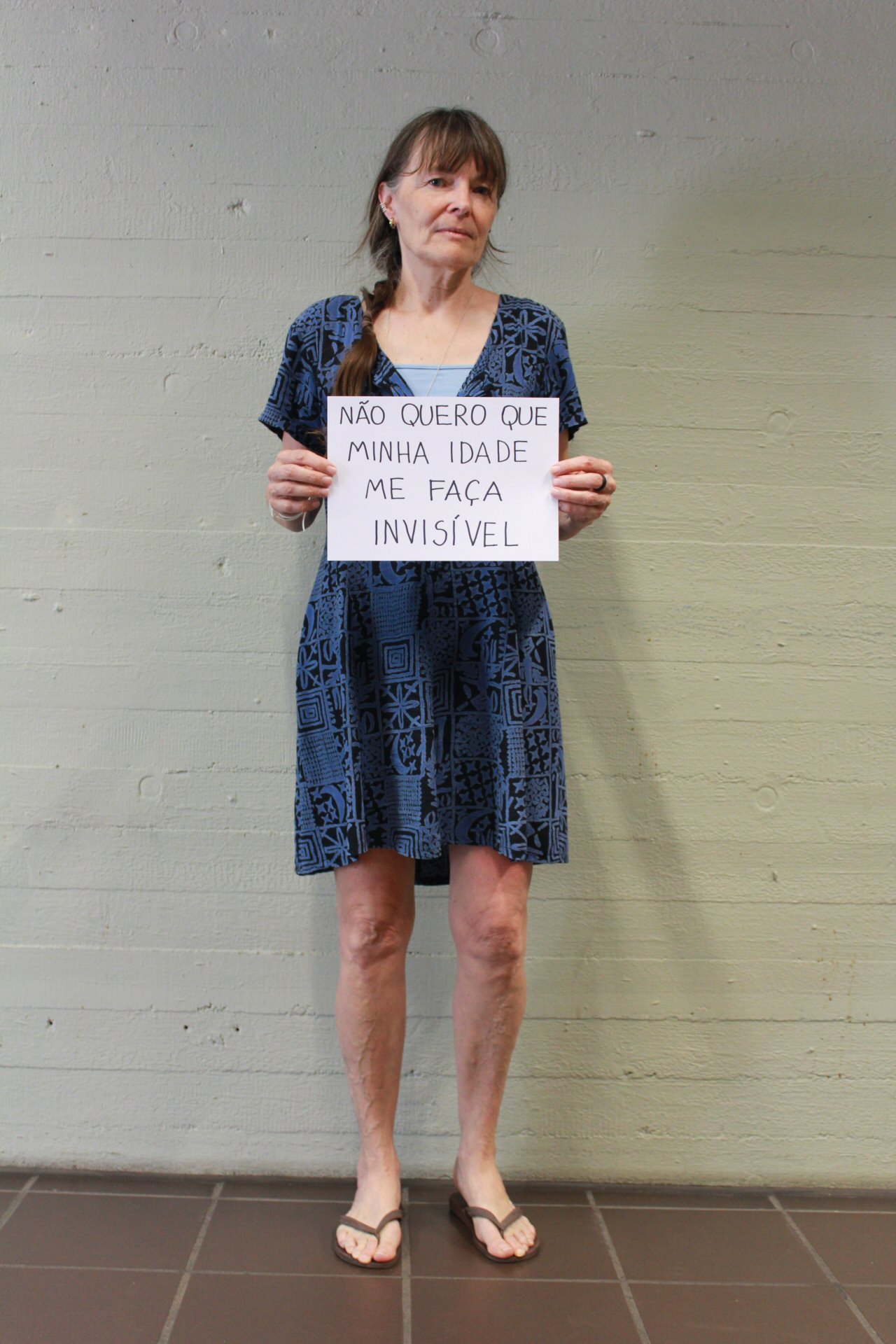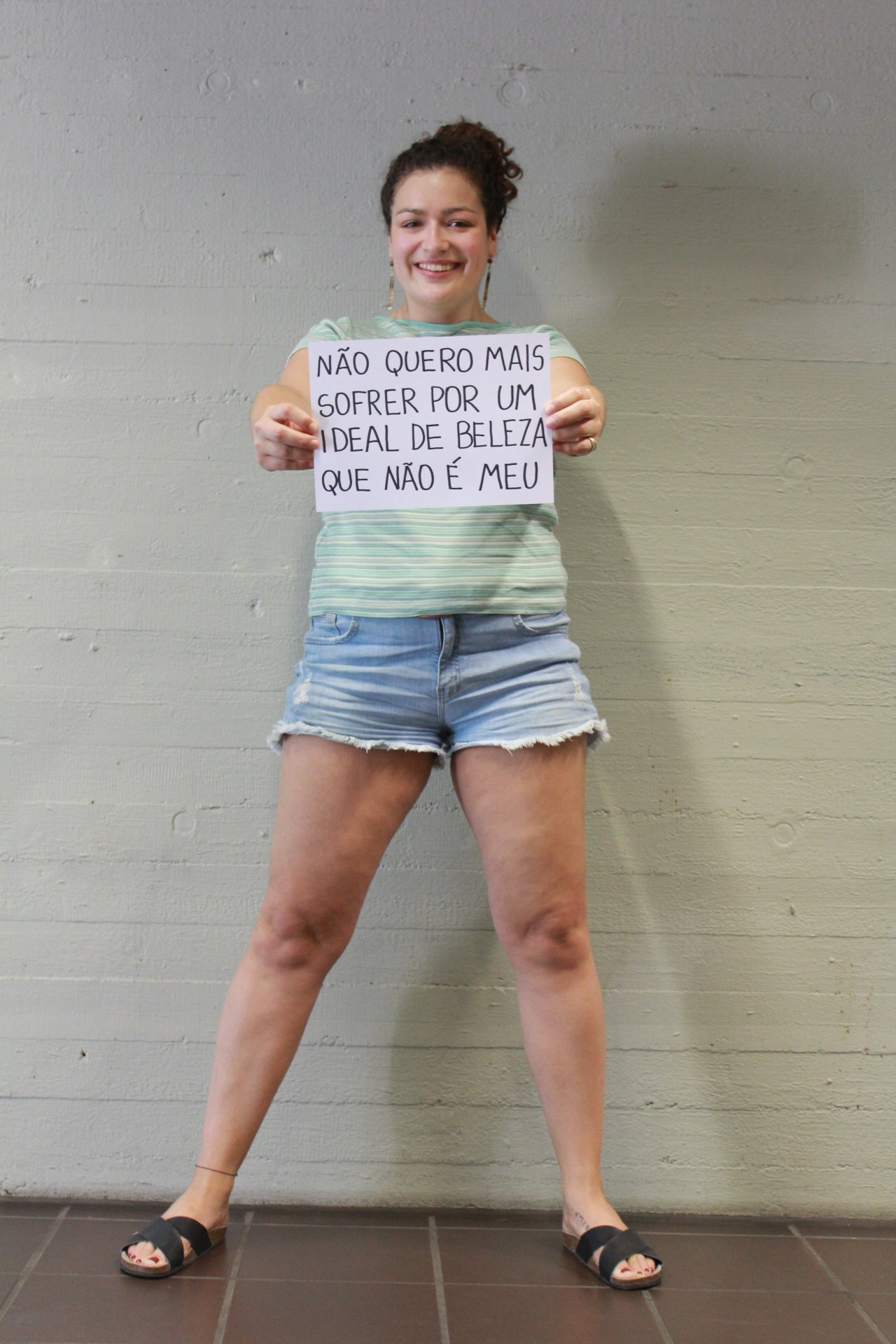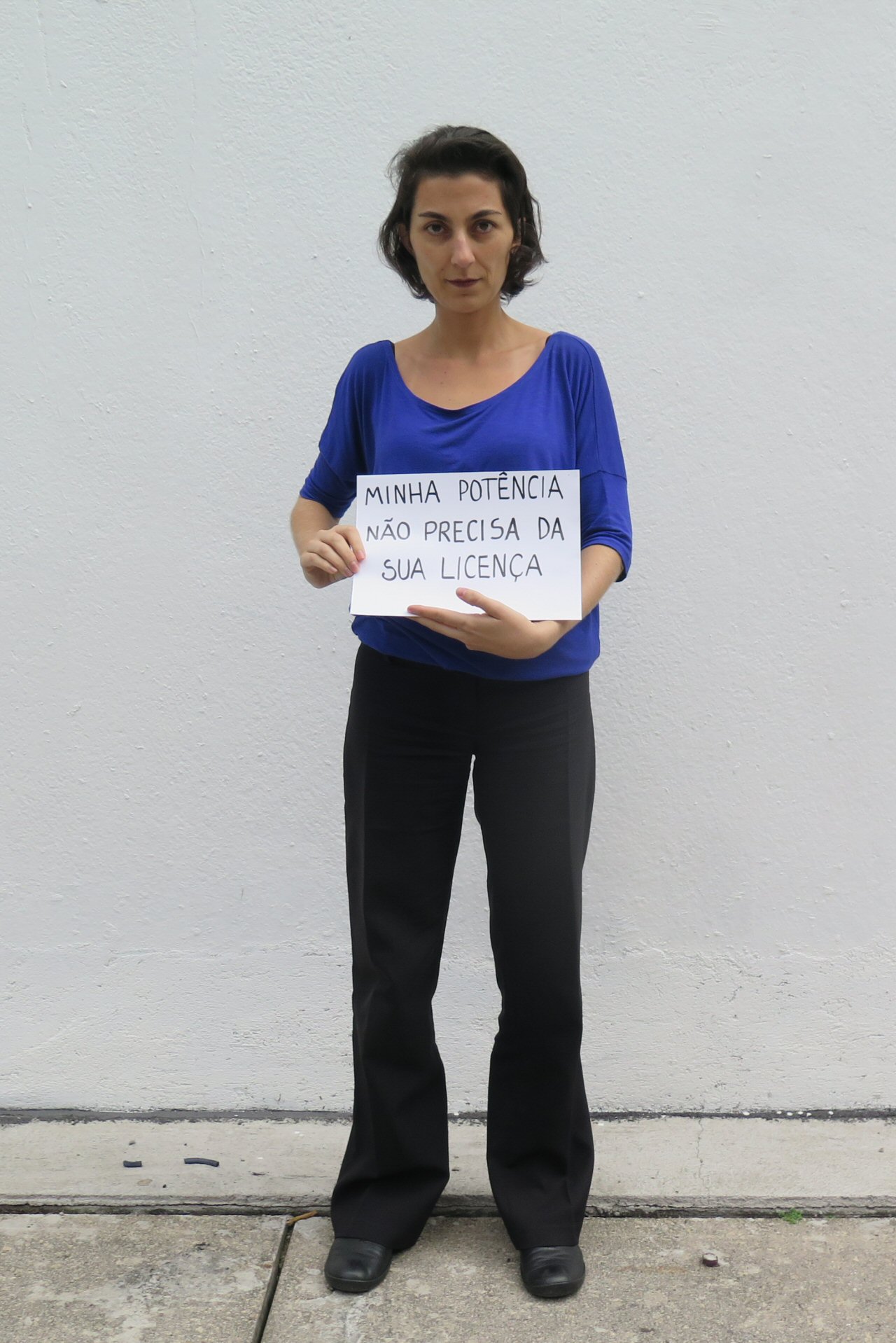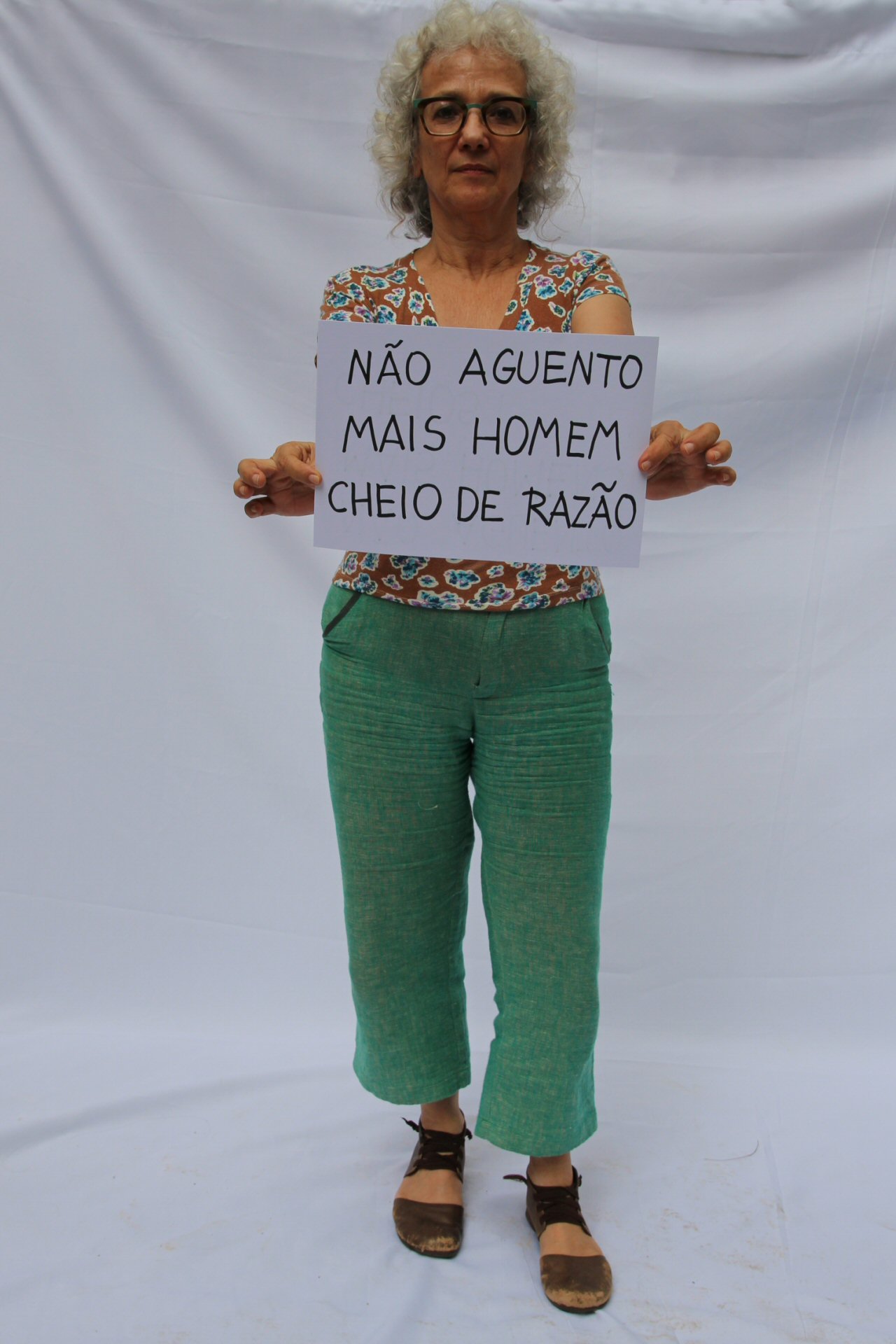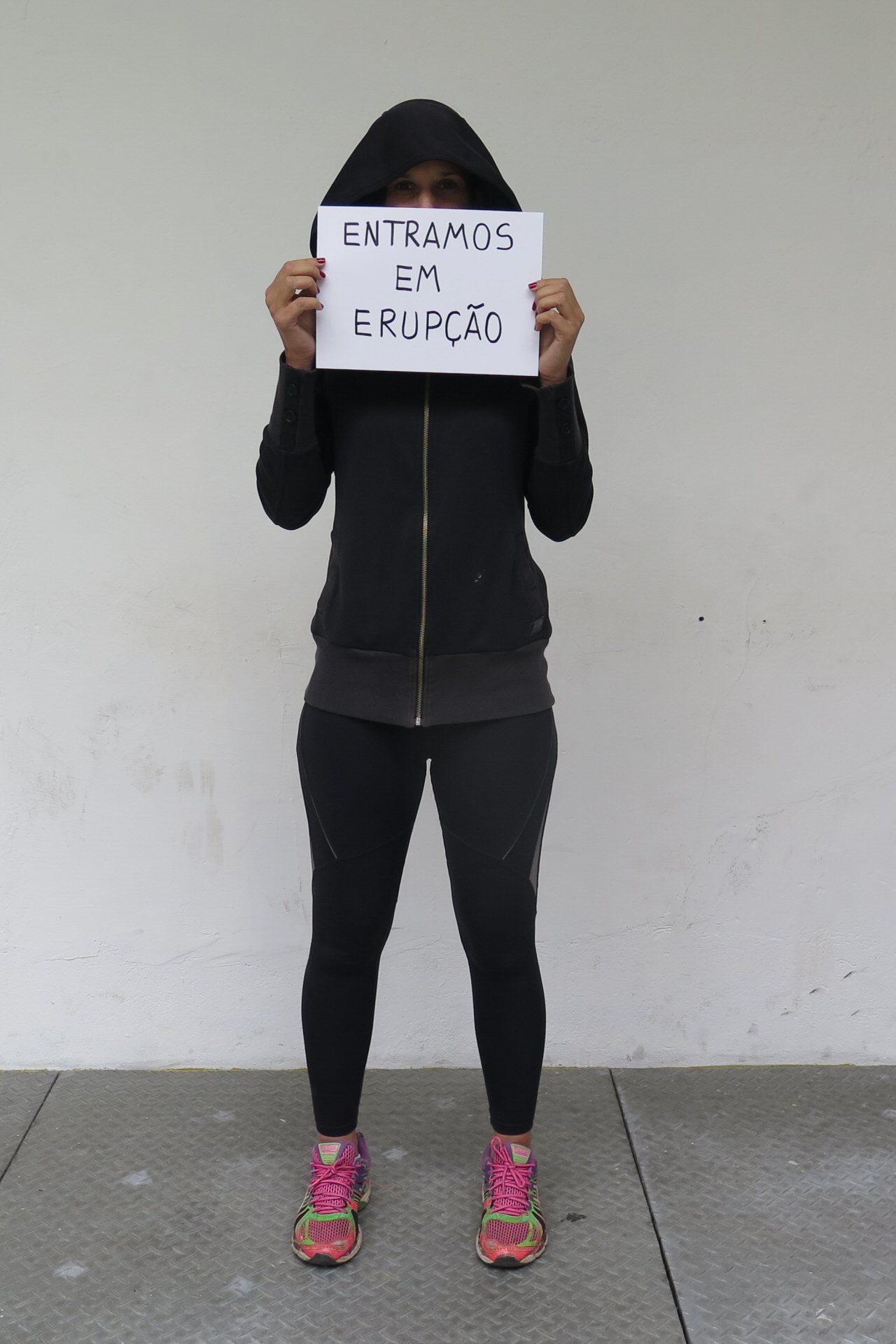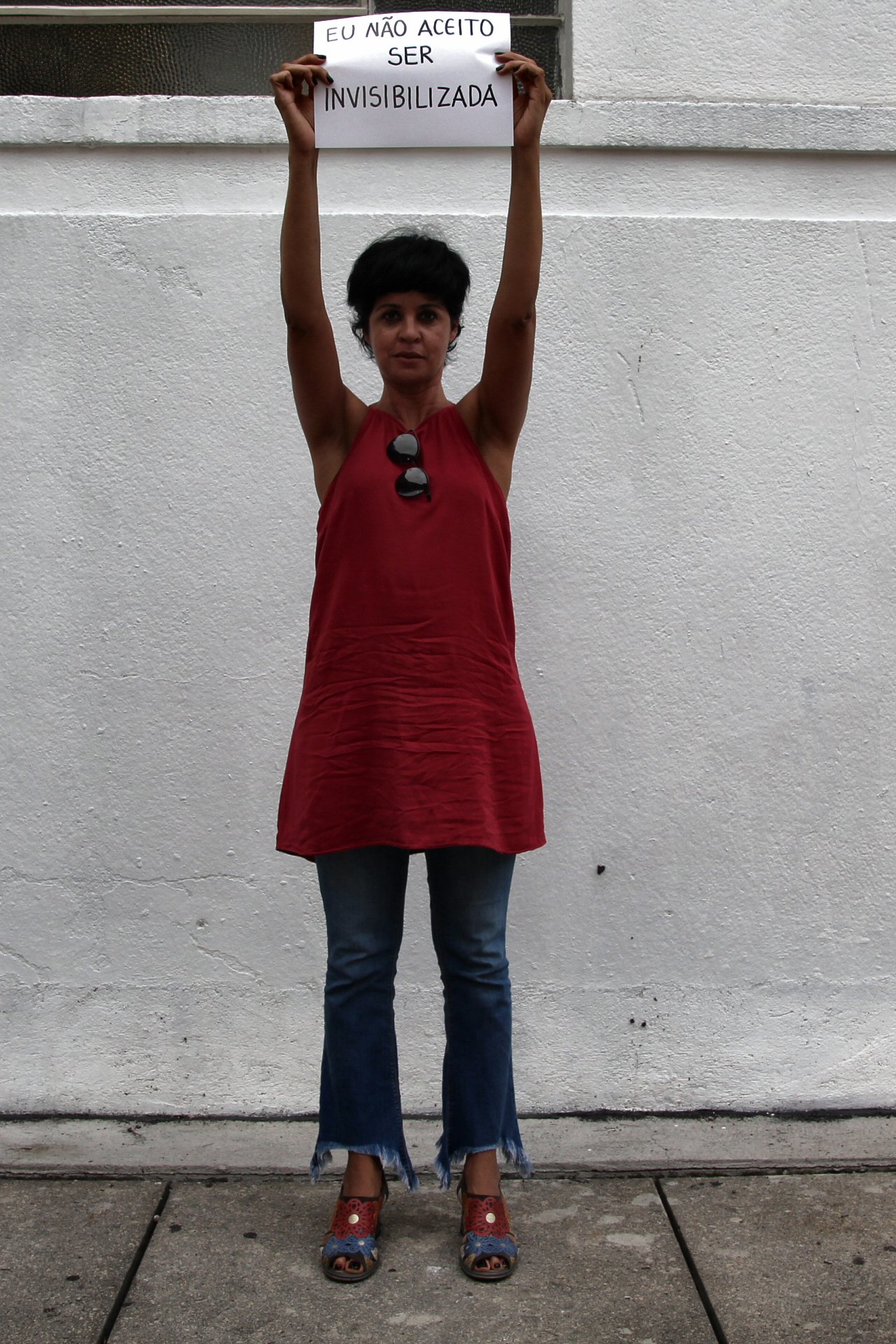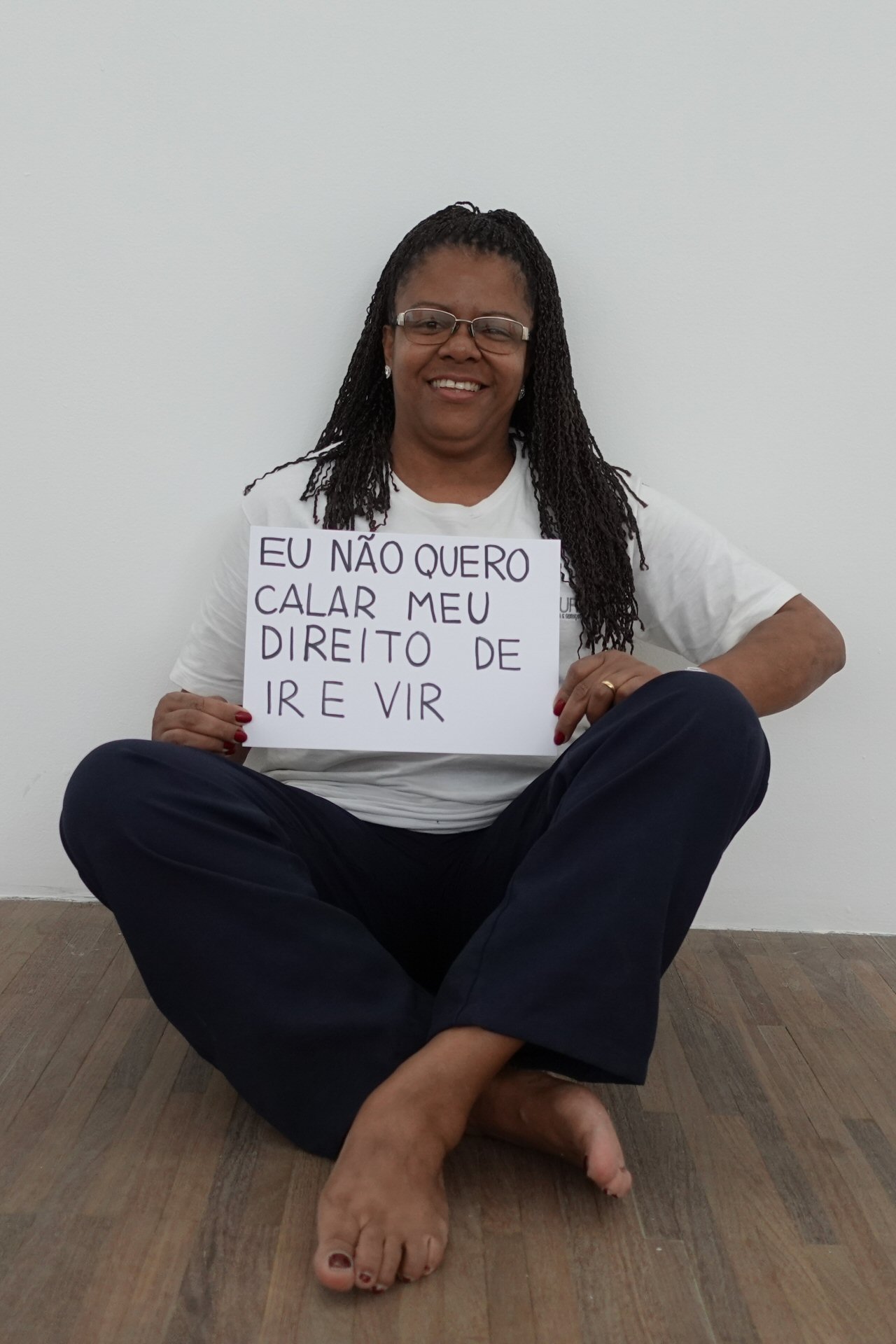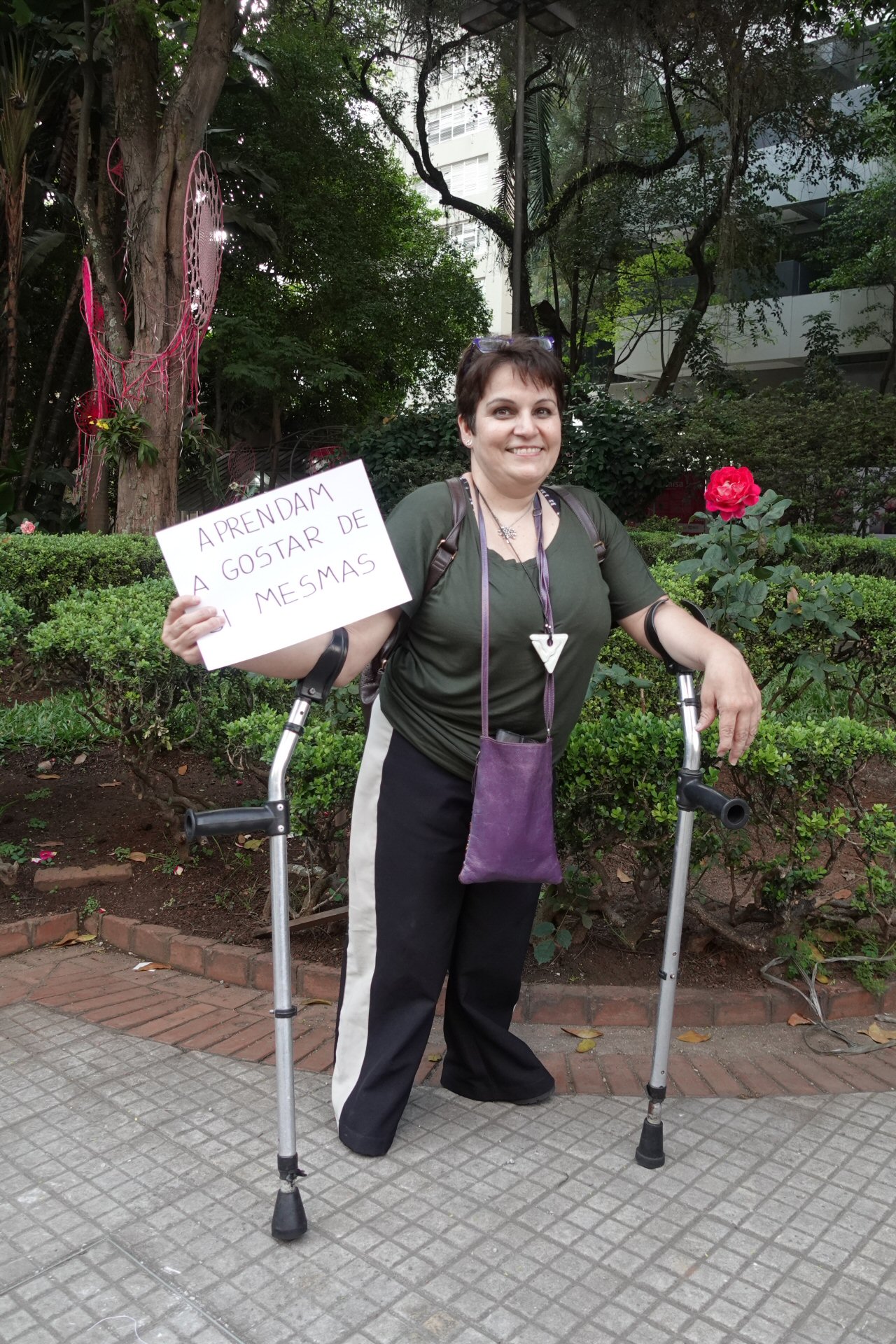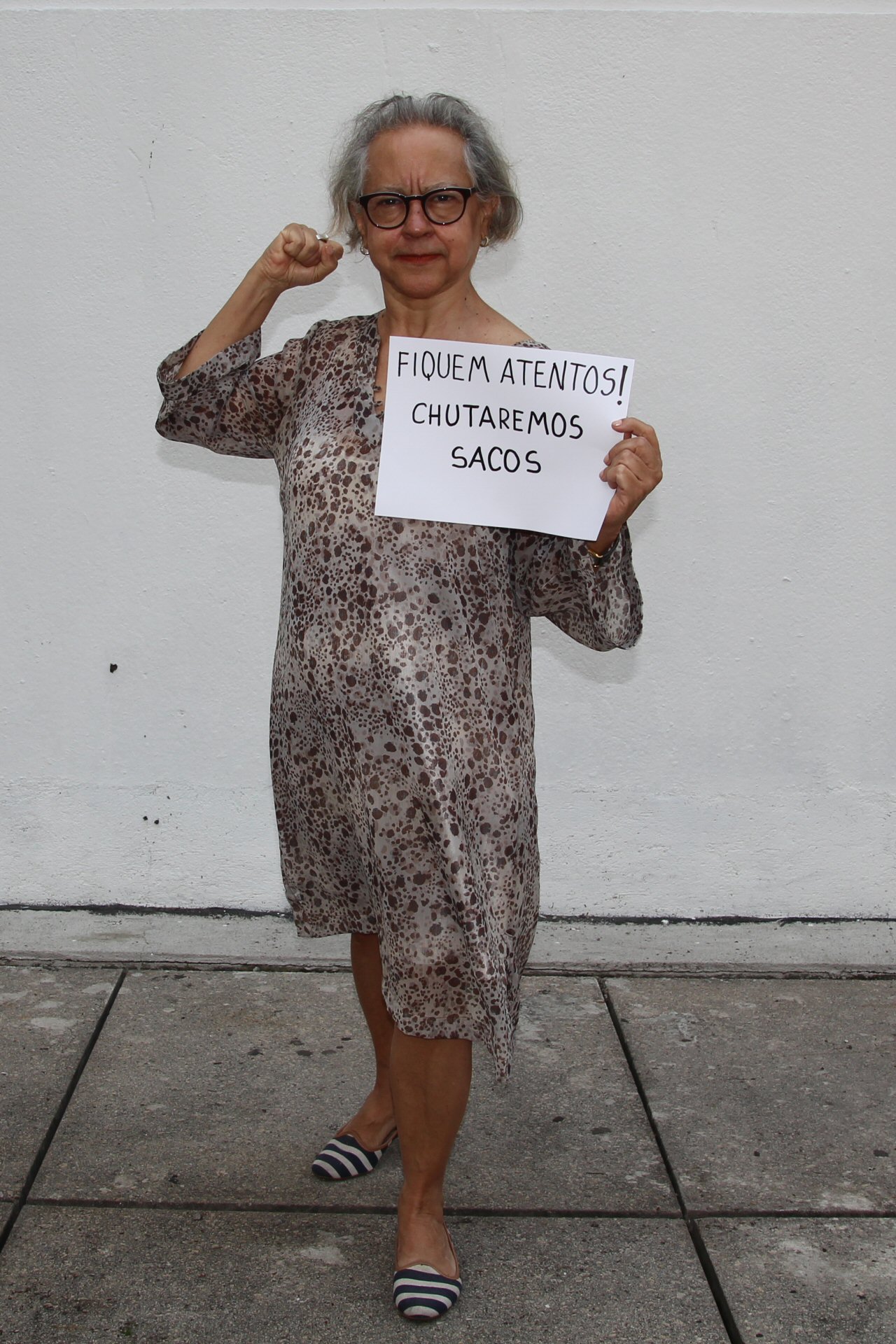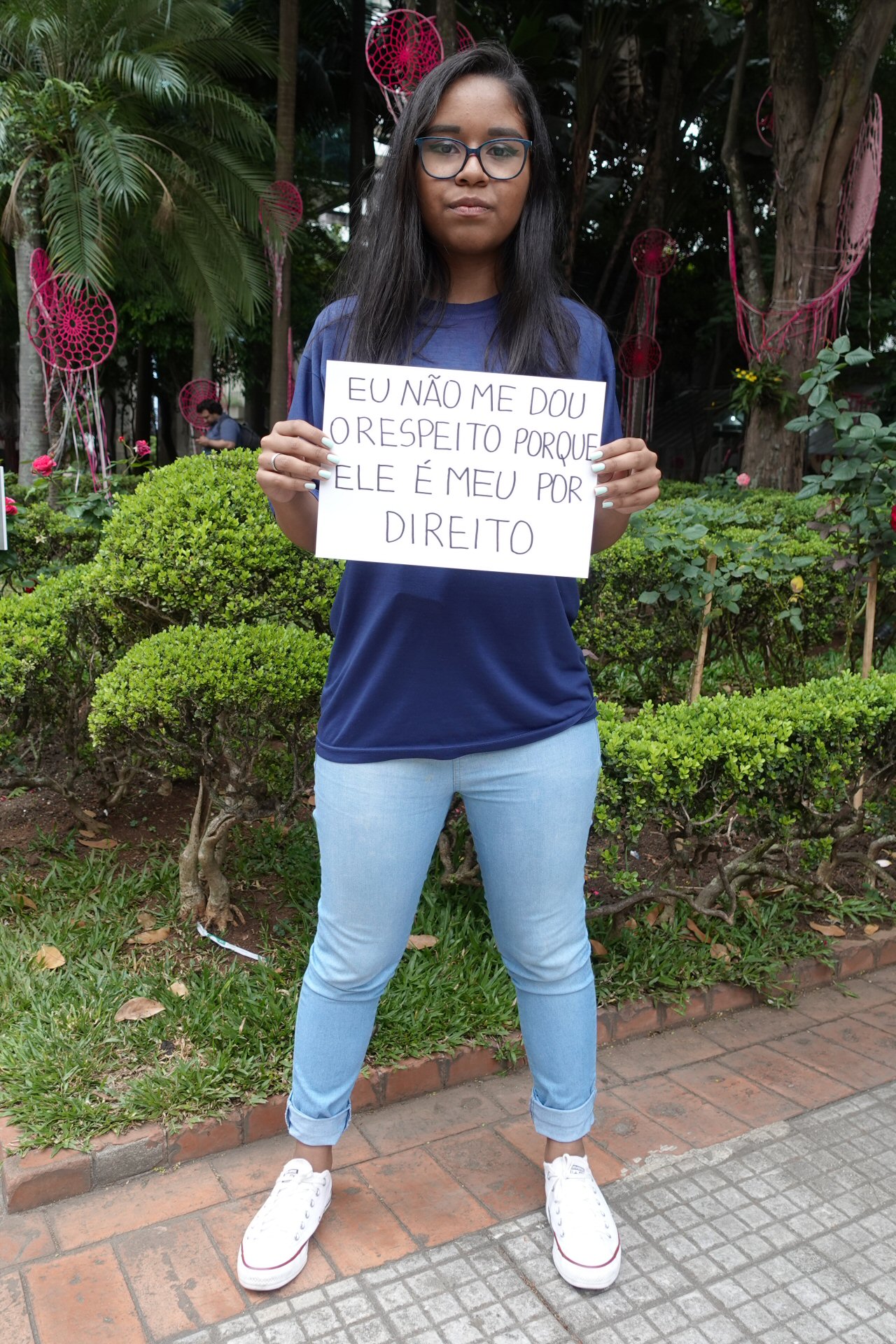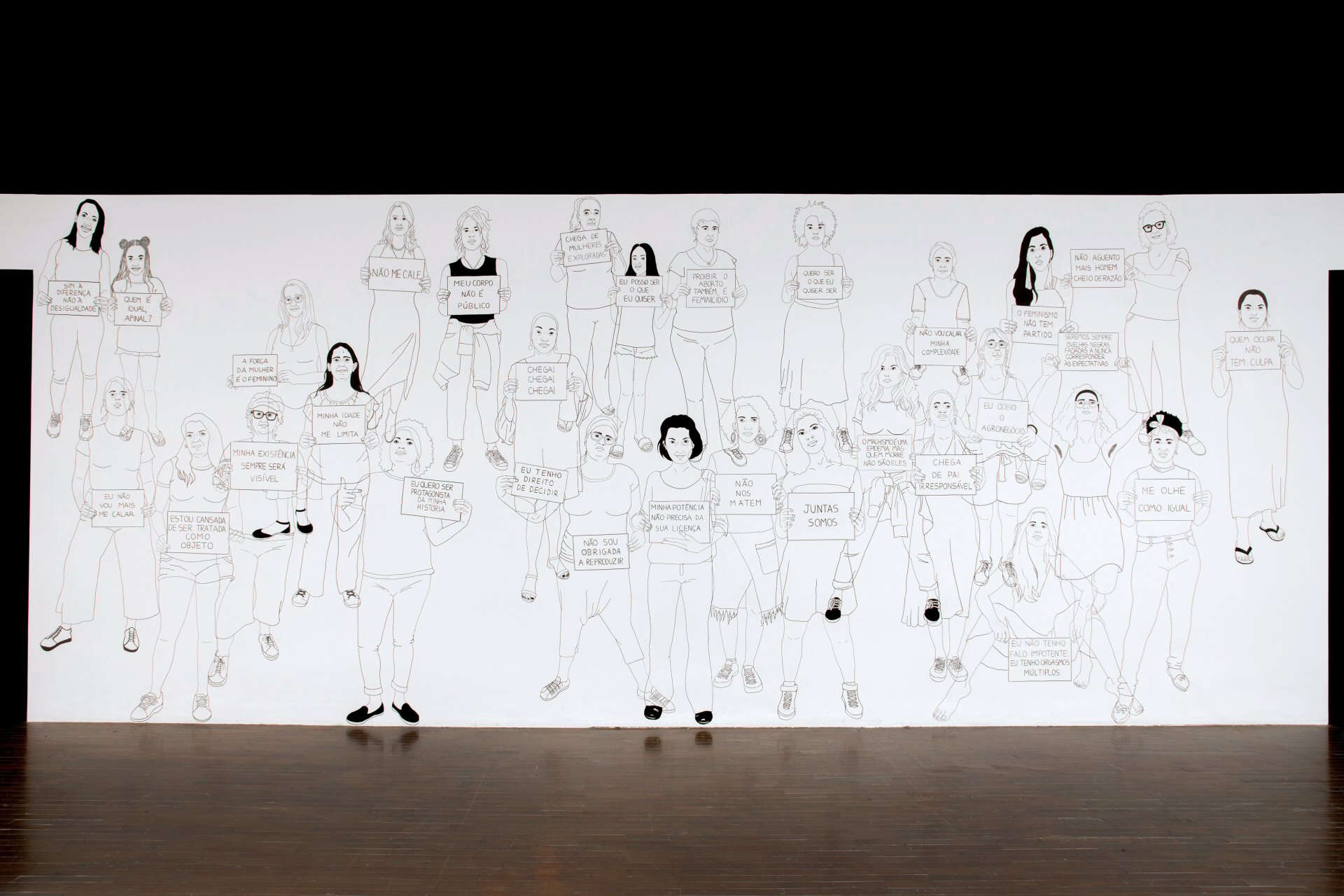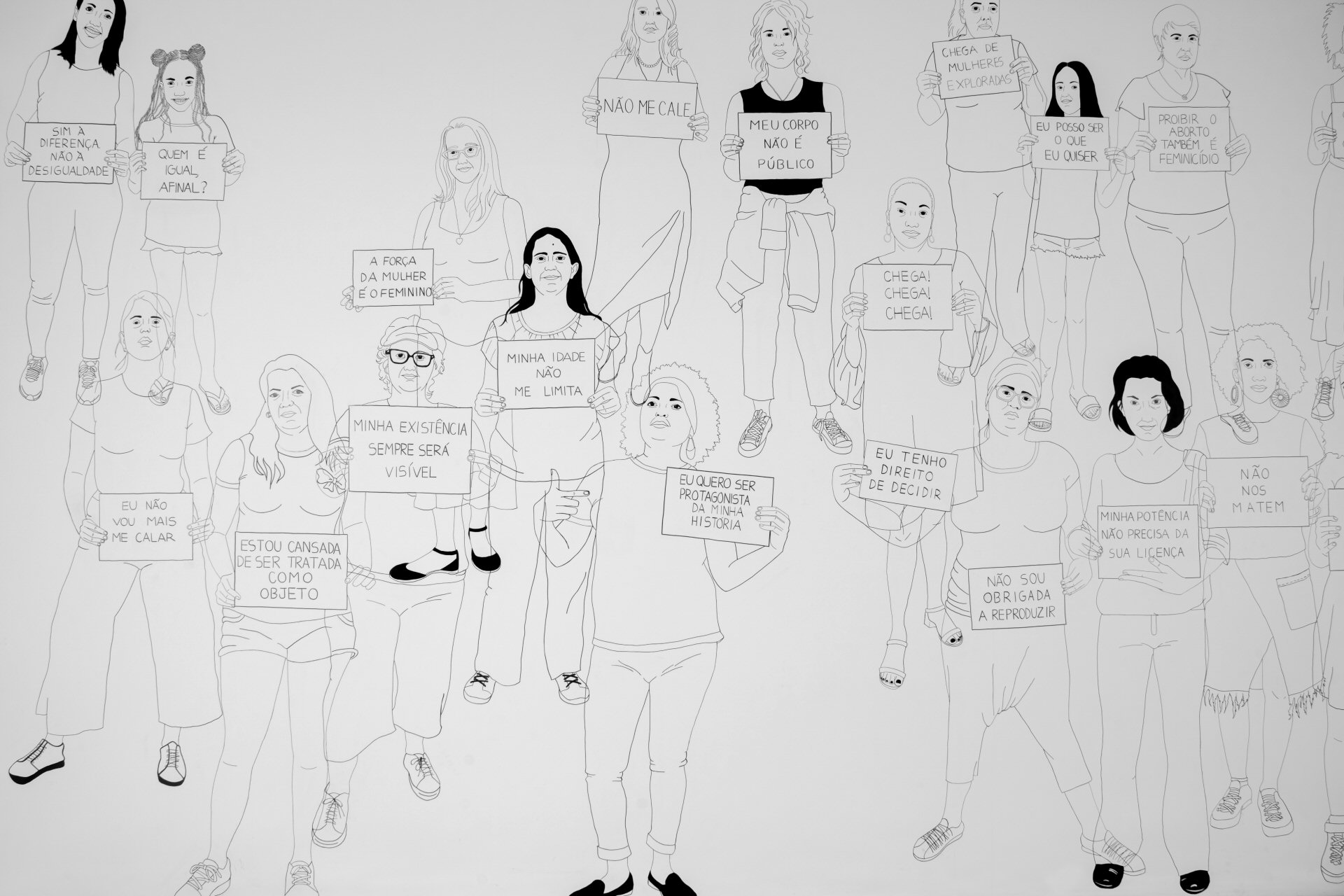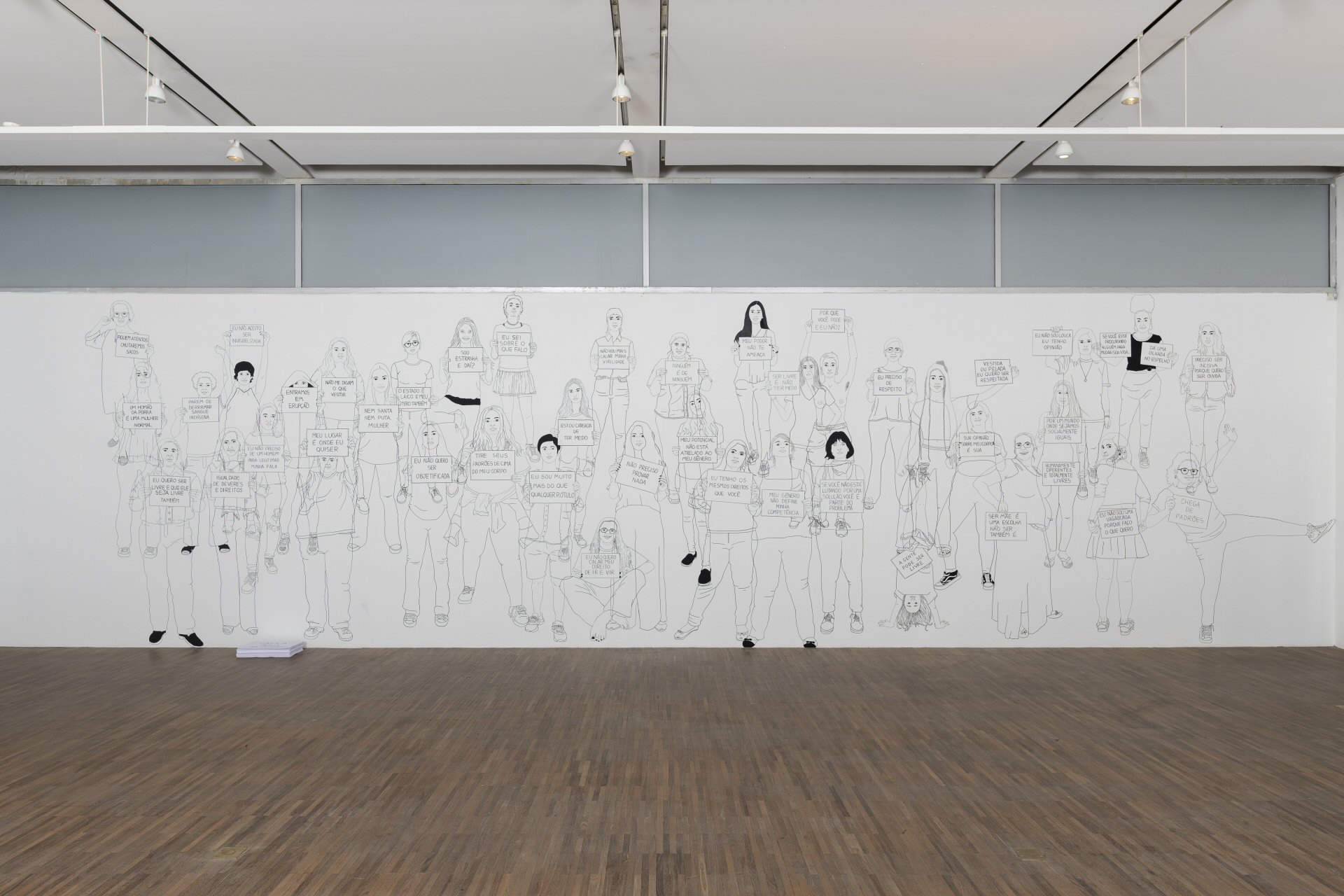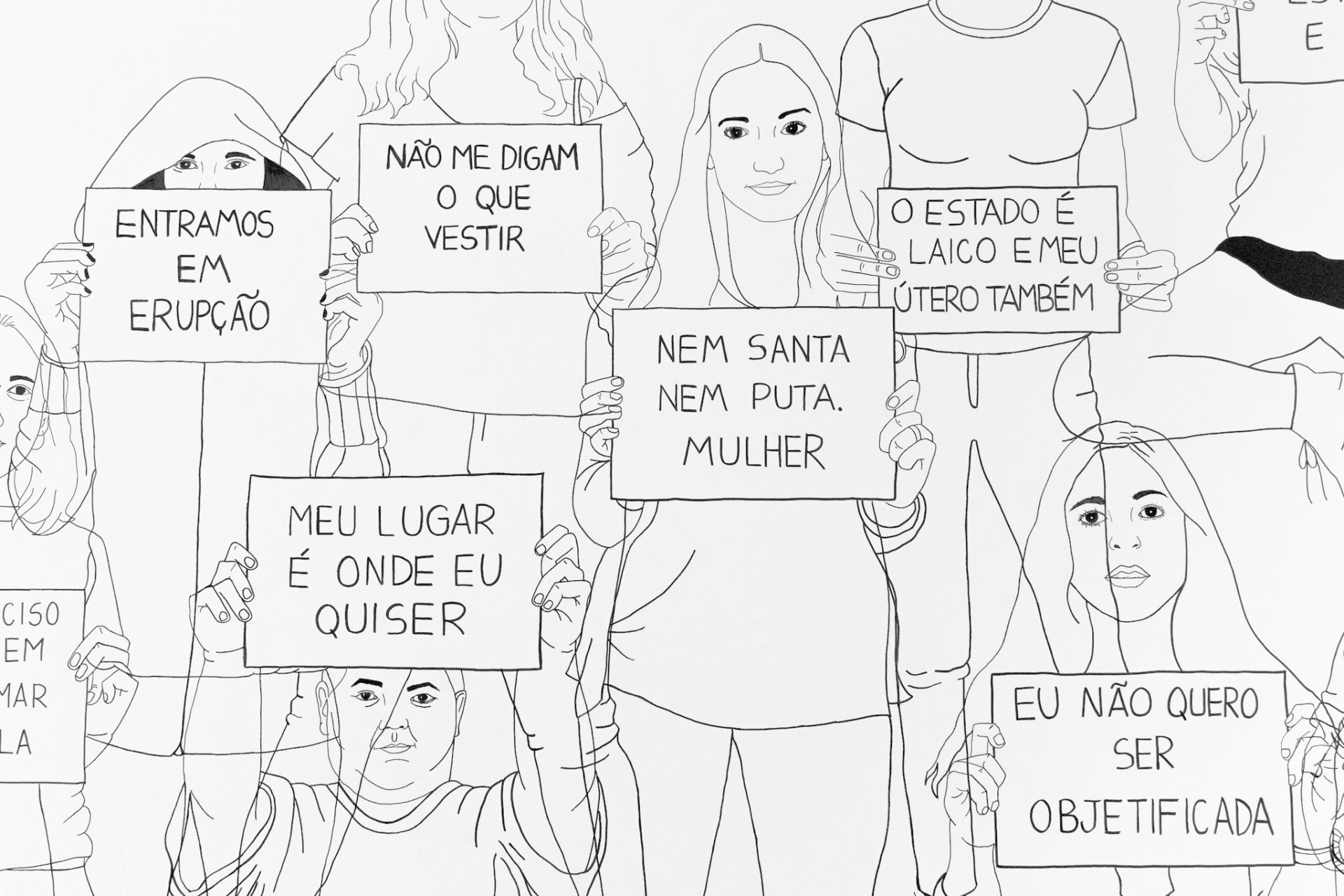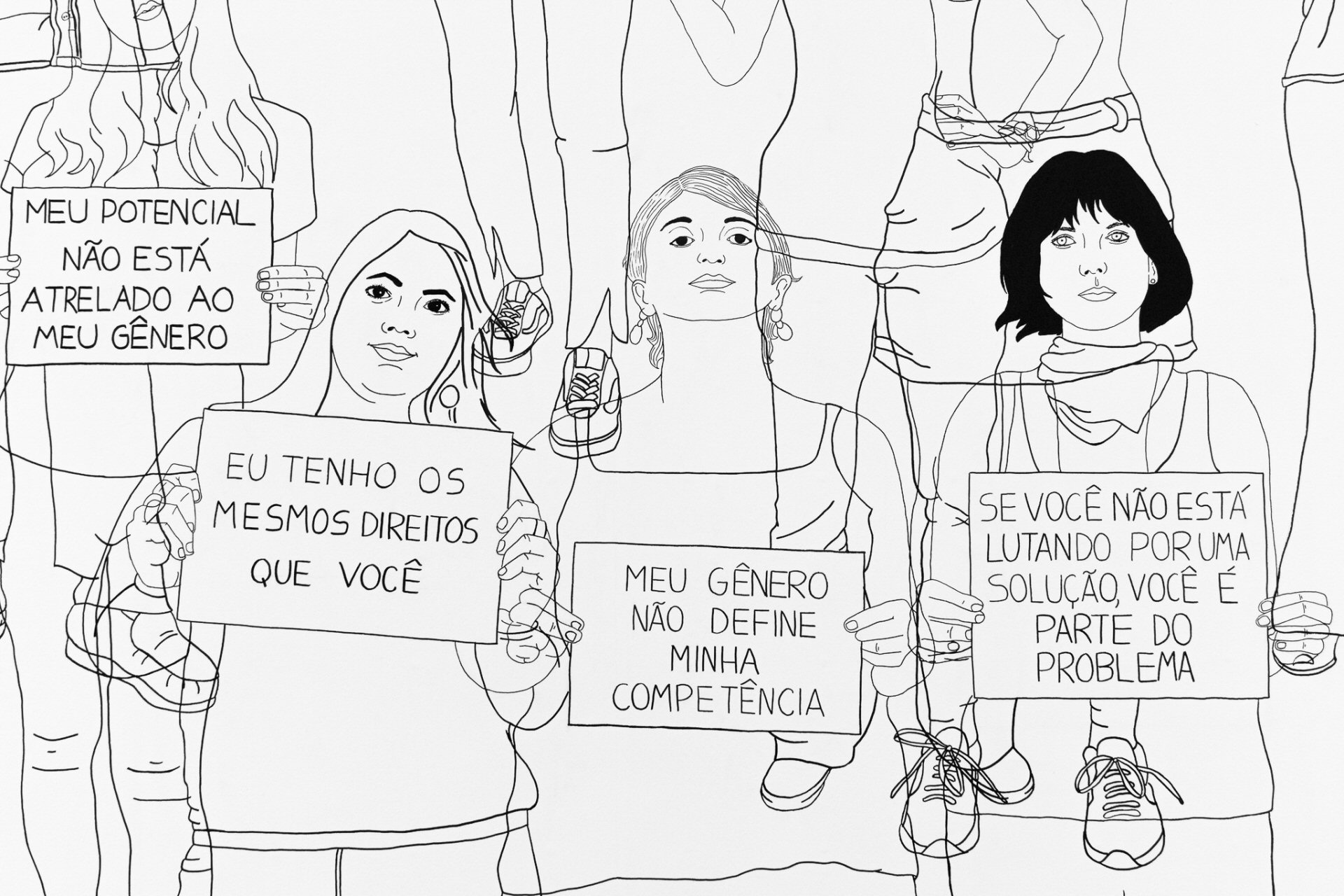Cala a boca já morreu | 2019
CALA A BOCA JÁ MORREU!
ação urbana e instalação
O que você não quer mais calar? A partir desta pergunta, tenho conversado com mulheres pelas ruas de diversas cidades. Destas conversas, tiram-se frases que explicitam as demandas e desejos destas mulheres, fotografadas, em seguida, com o cartaz contendo a frase extraída.
Este trabalho dialoga diretamente com o momento atual, principalmente no Brasil – mas não apenas – quando vivenciamos a derrocada das democracias e o fortalecimento de movimentos de direita ameaçando as liberdades individuais e coletivas, colocando em risco conquistas históricas feitas à duras penas. Dar voz às mulheres, indistintamente, em ruas e outros espaços públicos é um ato de luta e resistência. A rua torna-se local para trocas e encontros, confrontos de ideias e relatos íntimos entre as mulheres interessadas em participar.
69 das 101 fotos registradas entre Março e Outubro de 2019 foram traduzidas para desenhos, em grande formato, feitos diretamente em paredes de espaços expositivos, do Centro Universitário Maria Antonia (na exposição “É tarde, mas ainda temos tempo) e do Museu de Arte Brasileira (na exposição do 7o Prêmio Marcantonio Vilaça), em São Paulo. Posteriormente poderão tomar, também, a forma de publicações, cartazes ou outras mídias.
Este é um trabalho em processo e, como tal, em contínua reflexão para seus possíveis desdobramentos.
CALA A BOCA JÁ MORREU! *
urban action and installation
* The original title in Portuguese comes from a saying “Cala a boca já morreu, quem manda na minha boca sou eu” which means literally: “Shut Up” is Dead, I Am the One Who Commands my Mouth.
What do you no longer want to keep silent about? Setting out with this question, I have talked to women on the streets of various cities. From these conversations, phrases are chosen that make explicit the demands and desires of these women, subsequently photographed with a placard containing the selected phrase.
This work dialogues directly with the current moment – primarily, but not solely, in Brazil – as we experience the collapse of democracies and the strengthening of right-wing movements, threatening individual and collective freedoms, jeopardizing historical conquests achieved at heavy cost. Giving voice to women, indiscriminately, in streets and other public spaces is an act of struggle and resistance. The road becomes the site for encounters and exchanges, confrontations of ideas and intimate reports between those women interested in taking part.
69 of the 101 photos taken between March and October 2019 were translated into large-scale drawings, made directly on the walls of exhibition spaces at the Maria Antonia University Centre (in the exhibition “It’s Late, but we Still Have Time”) and the Brazilian Museum of Art (in the exhibition for the 7th Marcantonio Vilaça Prize), both in São Paulo. They may also appear in future in the form of publications, posters, or other media.
This is a work in progress and, as such, in continual reflection on its possible evolutions.
